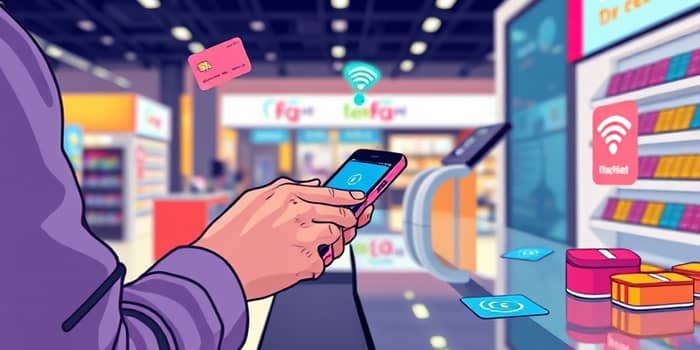
Discover how to configure your credit cards for seamless mobile payments.
Digital wallets are software-based platforms that securely store various payment information—credit cards, debit cards, loyalty cards, tickets, and more—in a single, digital location on your smartphone, smartwatch, or tablet. Their primary purpose is to streamline physical card transactions and facilitate secure, convenient payments both online and in-store.
By replacing a bulky physical wallet, digital wallets offer users an intuitive interface that consolidates payment methods, loyalty programs, and tickets. They rely on advanced technologies like tokenization and biometric authentication to reduce fraud and simplify the checkout process.
Contactless and digital payments have become the standard. In the past month, 21% of internet users leveraged Google Pay, while Apple Pay boasts nearly 240 million active users. PayPal still leads overall digital payment volume, but wallets embedded in mobile devices are closing the gap rapidly.
Mobile wallet adoption is expected to experience 15% global growth, reaching nearly 5 billion users by the end of 2025. Contactless transactions now account for over 50% of in-person payments worldwide, and credit cards remain dominant, comprising 31% of all U.S. transactions.
The average U.S. consumer made 48 payments per month in 2024, up from previous years. Credit cards stored in digital wallets are chiefly responsible for this surge, especially in remote transactions. Loyalty and rewards integration further drives usage, as 25% of consumers cite reward points as their primary incentive to shop online.
The digital wallet landscape features several top players, each offering unique capabilities and device support. This table summarizes the major providers:
Other wearables such as Fitbit and Garmin also support contactless payments through their own wallet applications. Most digital wallets now allow linking multiple credit and debit cards, loyalty gift cards, transit passes, and event tickets.
Configuring your credit card for mobile pay involves several straightforward steps. Begin by ensuring your device meets compatibility requirements—latest operating system and official wallet app.
First, launch the wallet application preinstalled on your device or download it from an official app store. Next, follow the on-screen prompts to create or sign in to your account, entering basic personal details and verifying your identity as required.
Once your account is active, secure your wallet by setting a strong password, PIN, or enabling biometric authentication such as Face ID or fingerprint unlock. This adds an extra layer of protection and ensures only you can authorize transactions.
To add your credit card, tap “Add Card” in the app. You can scan your card using your device’s camera or input the details manually. Your bank may require additional verification—commonly a one-time passcode sent via SMS or email—to finalize setup.
After verification, your credit card is ready to use. For in-store purchases, simply look for contactless payment symbols on terminals. To pay, hold your device near the reader and authenticate via biometric or PIN. For online and in-app payments, select your mobile wallet at checkout.
Digital wallets employ advanced safeguards to protect your payment data. Tokenization replaces real card numbers with unique digital tokens for each transaction, dramatically reducing fraud risk. This process ensures that your actual credit card details never touch the merchant’s system.
Encryption protects data both at rest and in transit, making intercepted information useless to attackers. Biometric authentication such as Face ID or fingerprint adds another security layer, requiring your unique biological markers to approve payments.
Additionally, if your device is lost or stolen, you can remotely lock or wipe your digital wallet using your device management tools. This remote wipe capability ensures your sensitive payment credentials remain safe even in adverse circumstances.
Embracing mobile payments offers consumers a host of advantages:
Despite widespread growth, some challenges persist in the mobile payment ecosystem:
The momentum behind digital wallets shows no signs of slowing. By 2025, mobile wallet users are projected to surpass 5 billion globally, with credit card integration standard in most platforms. Real-time account management, dynamic loyalty offers, and deeper partner integrations will further enrich the wallet experience.
Contactless NFC technology will continue to dominate both online and brick-and-mortar transactions. Emerging innovations like wearable payment bands and biometric authentication embedded in everyday devices hint at a future where digital payments become truly frictionless.
Encountering setup or payment glitches? Here are quick tips:
- Ensure you have the latest app and device firmware installed.
- Confirm your bank supports the digital wallet you’re using and that your specific card is eligible.
- Restart your device if the wallet app fails to load or add cards.
- Contact your card issuer for verification errors or missing one-time codes.
With these best practices, you can overcome most technical hurdles and enjoy the full benefits of mobile wallet technology.
References













